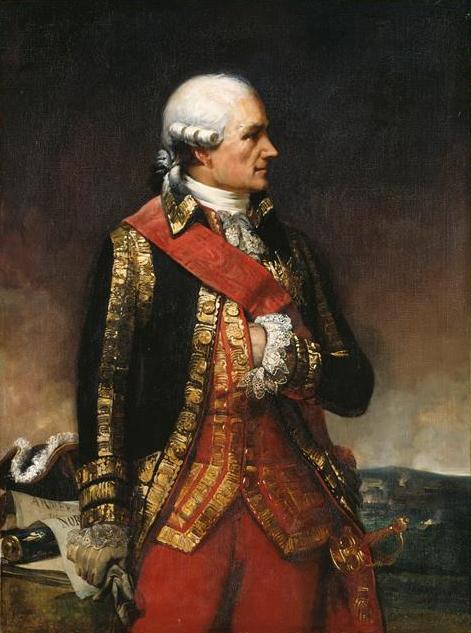Currently, we are studying Scott's Plantation, also known as Belvoir. The property was bought a few years ago by Rockbridge Academy. They plan to develop their new campus around the estate. Scott's Plantation is best known for being the home of Francis Scott Key's grandmother, Ann Arnold Ross Key. His uncle and aunt, Col. Henry Maynadier and Elizabeth Ross Key Maynadier, also lived on the plantation during the late 18th century through the early 19th century.
View towards west of Scott's Plantation.
While attending St. Johns in Annapolis, Francis Scott Key would visit the plantation. By 1819, he and his uncle Henry Maynadier worked together in an attempt to colonize an area in west Africa (Liberia) through the American Colonization Society. Although over 12,000 people of African descent were relocated to Africa, the movement failed.
Francis Scott Key by Dewitt Clinton Peters.
(Photo courtesy of Maryland Historical Society, image #1952.15.10).
(Photo courtesy of Maryland Historical Society, image #1952.15.10).
The Archaeology (May-June 2014)
Our archaeological work began by attempting to find a very important site, yet a very elusive one---the September 17-18, 1781 Rochambeau Revolutionary War encampment. Almost 5,000 men camped at Scott's plantation for just several hours before marching to Annapolis and then on to Yorktown, Virginia. The only description of the camp we have is that it was on a hill between the plantation house and the butchery.

Indeed, the best way to find a military encampment is to metal detect; therefore, we spent two weeks metal detecting across open grass fields west of the plantation house. We also excavated the landscape with shovels, but any evidence of the camp had either been washed away by the active sandy soils or it was never there in the first place. The camp may very well be to the south in an area that use to be part of the original 1,000 acre estate. Today, it is a development with million dollar homes that surround the 200 year old Belvoir Cemetery; Ann Arnold Key and Henry and Elizabeth Maynadier's infant daughters are buried here.
Headstone of Mrs. Ann Arnold Key, 1811.
Although we never found the Rochambeau camp, we did find something equally exciting. When Belvoir went up for sale in 1816, the Maryland Gazette advertised the estate with a "large stone building for servants" (February 29, 1816). During excavation north of the plantation house, we encountered an area full of late 18th-early 19th century debris in the form of animal bone, wine bottle bases, and ceramics. At this time, it appears that we have a drainage feature where rock, brick, trash was thrown.
Four, 5 ft. x 5 ft. test units where brick, stone, and historic-artifacts have been collected. Historically, this location was a ditch where refuse was tossed. Numerous wine bottles, 18th and early 19th ceramics (photo below), and animal bone have been recovered here.
But, the question remains...where were these domestic artifacts coming from? Indeed, this ditch appears a bit too far away from the big house, so there must have been another 200 year old domestic residence close by.
This week, we uncovered a brick feature and to the north (left in photo) a stone wall. Could this be the stone servant's (slave) barracks referenced in 1816? We hope to answer this question next month.





